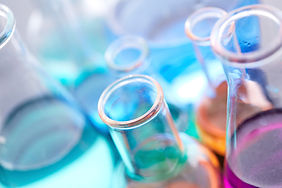Research Interests

.png)
"Simplified diagram of renin-angiotensin system. SARS-CoV-2 spike protein S1 domain binds to the extracellular domain of ACE2 leading to internalization of the SARS-CoV-2-ACE2 complex which decreases ACE2 expression on cell membranes. ACE2 is present in lung and kidney as well as other organs in the body." -Dr. Speth


-
Characterizations of Angiotensin (Ang) II Receptors in reproductive structures
-
Pioneering Studies of Ang II Receptor Subtypes with Selective Ligands
-
Characterization of Mas as the receptor for the Angiotensin 1-7
-
Sexual dimorphism in Ang II receptor function, novel signaling pathways and age-related health consequences
-
Involvement of the brain angiotensin system in neurogenerative diseases
-
Radioiodination of ligands for collaborative studies of receptor pharmacology and immunoassays (See "Book Chapters, Lectures, Videos and More" for more information.)
-
Researching the pharmacological and toxicological properties of “natural products”. Especially marijuana, in particular their use and abuse as drugs.
This study explores how [3H]-flunitrazepam, a type of benzodiazepine that functions as a γ-Aminobutyric Acid (GABA) agonist, binds to various parts of the brain. It was found that the density of [3H]-flunitrazepam was highest in the cerebrocortical and rhinencephalic areas and lowest in the brainstem and commissural tracts.

This study investigates how Angiotensin (1-7) has its own special binding sites that indicate it has a unique receptor called Mas. Mice without Mas could not hold in water adequately and their aortas struggled to relax. These functions are regulated by Angiotensin (1-7) which suggests it binds with Mas receptors in order to activate.
This study dives into the anatomy and physiology of the renin-angiotensin aldosterone system (RAAS). It is responsible for a multitude of functions such as fluid and electrolyte balance, hypertrophy, inflammation, cell growth and division, exacerbating co-morbid diseases like diabetes mellitus, and activating aldosterone. Most notably, RAAS raises blood pressure and volume too. Because co-morbid diseases can worsen with an active RAAS, more medication is developing to counter it. This includes but is not limited to angiotensin-converting enzyme (ACE and ACE-1) inhibitors, angiotensin II receptor antagonists, and aldosterone receptor antagonists.


Dr. Speth's Favorite Publications
Contact Me
Department of Pharmaceutical Sciences
Barry and Judy Silverman College of Pharmacy
Nova Southeastern University
3200 S. University Dr.
Fort Lauderdale, FL 33328-2018

